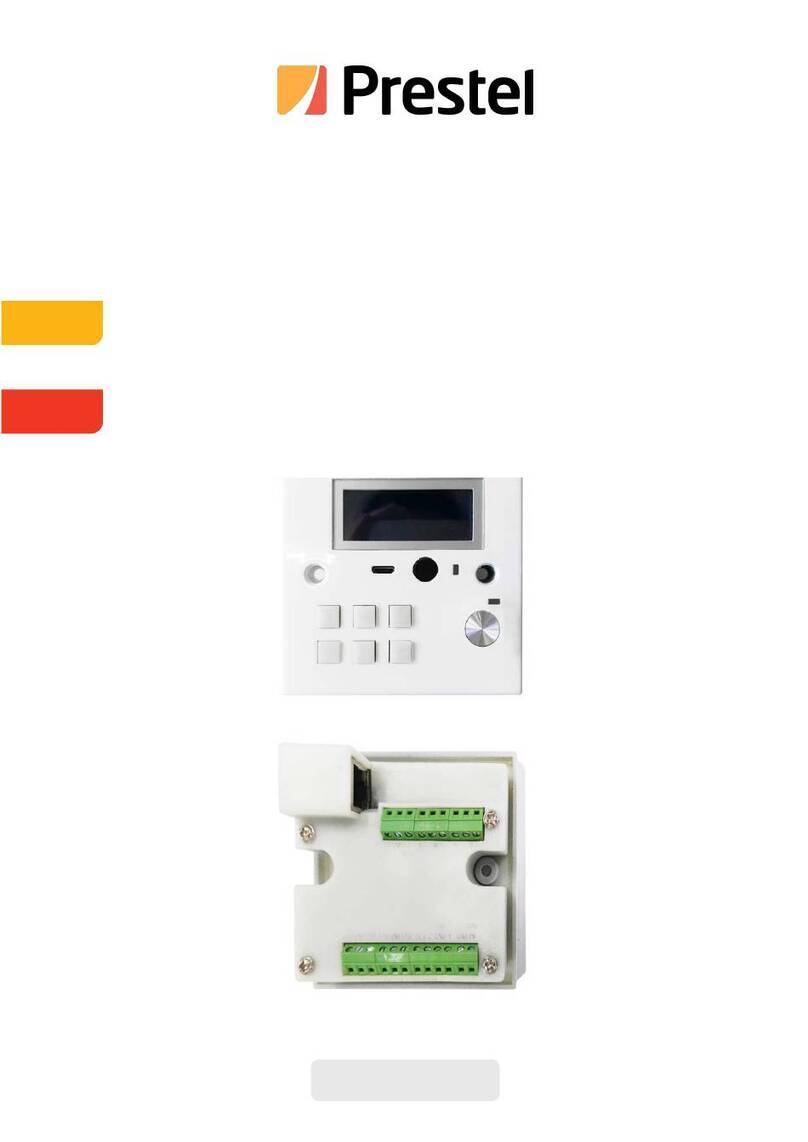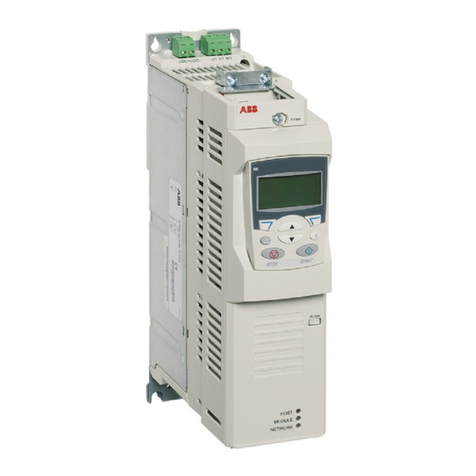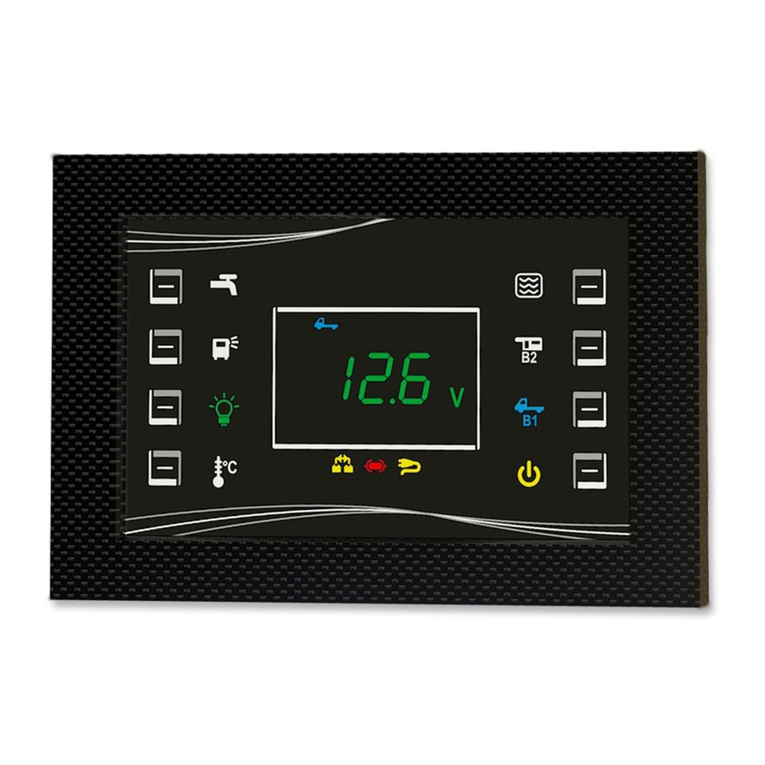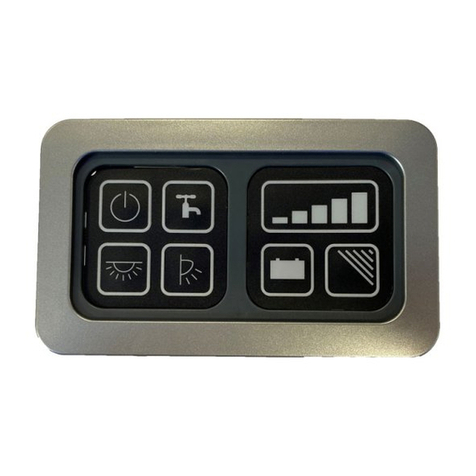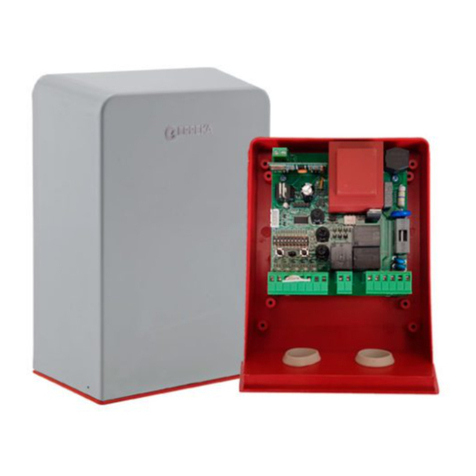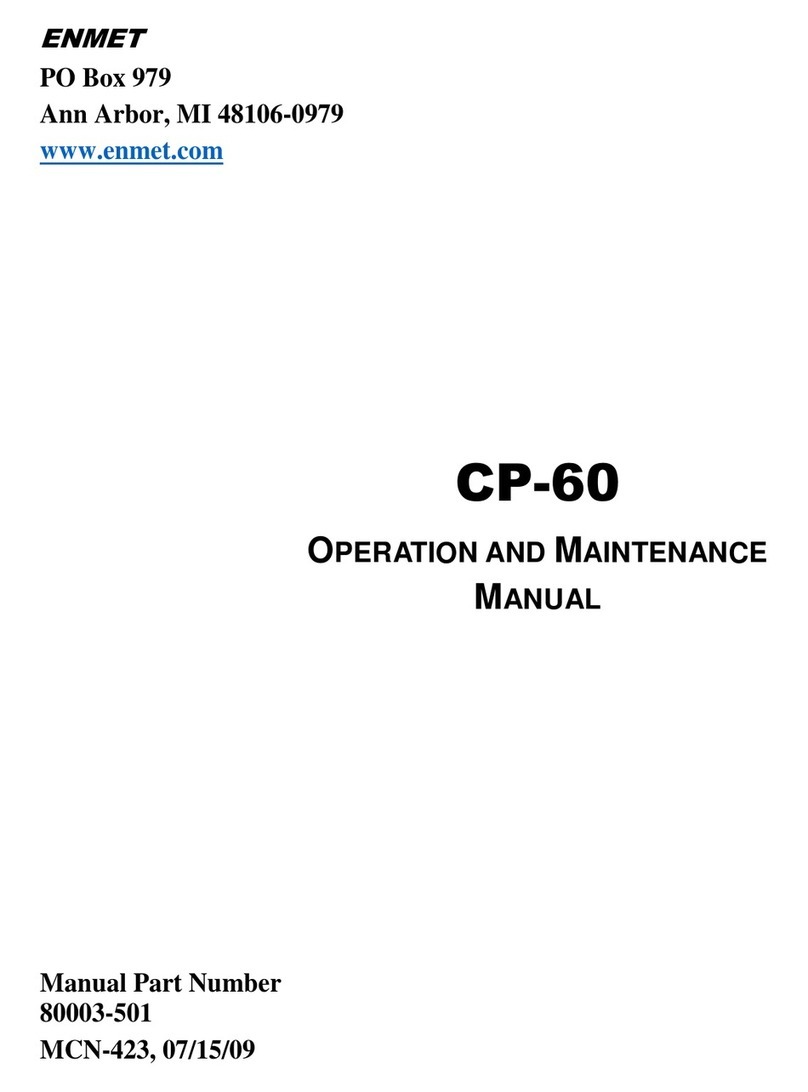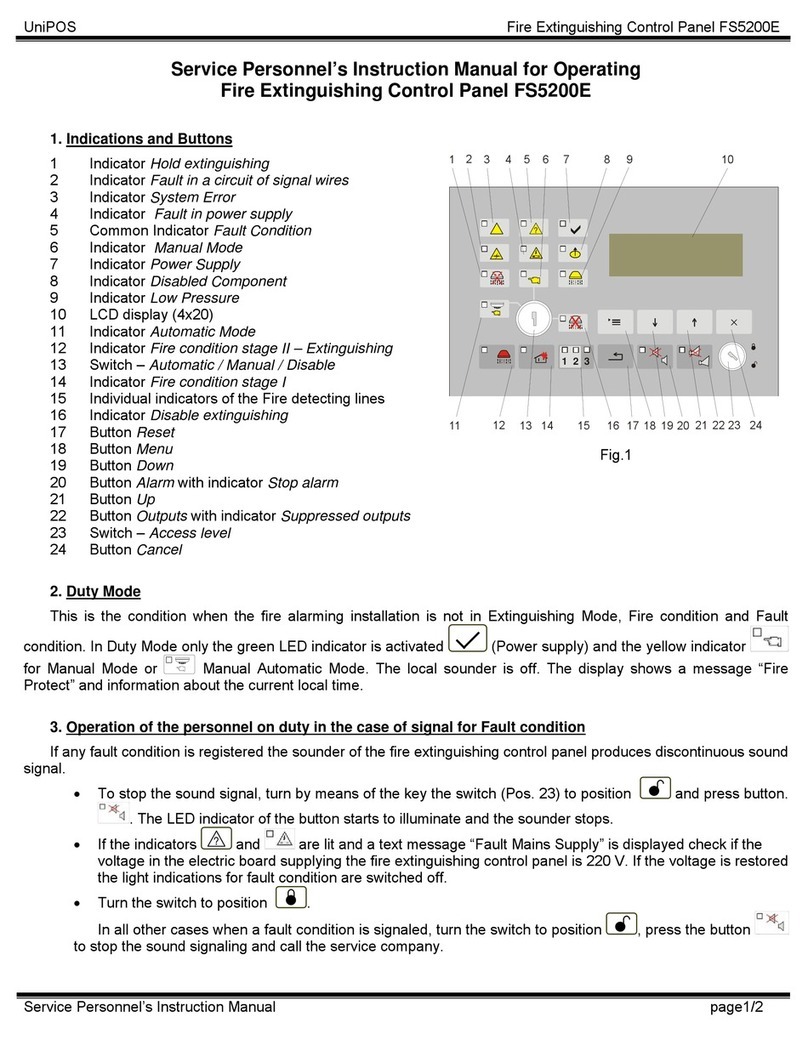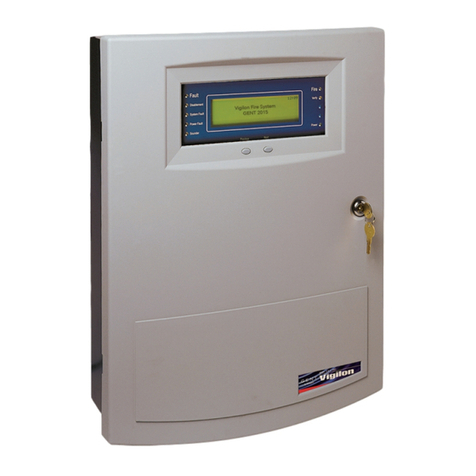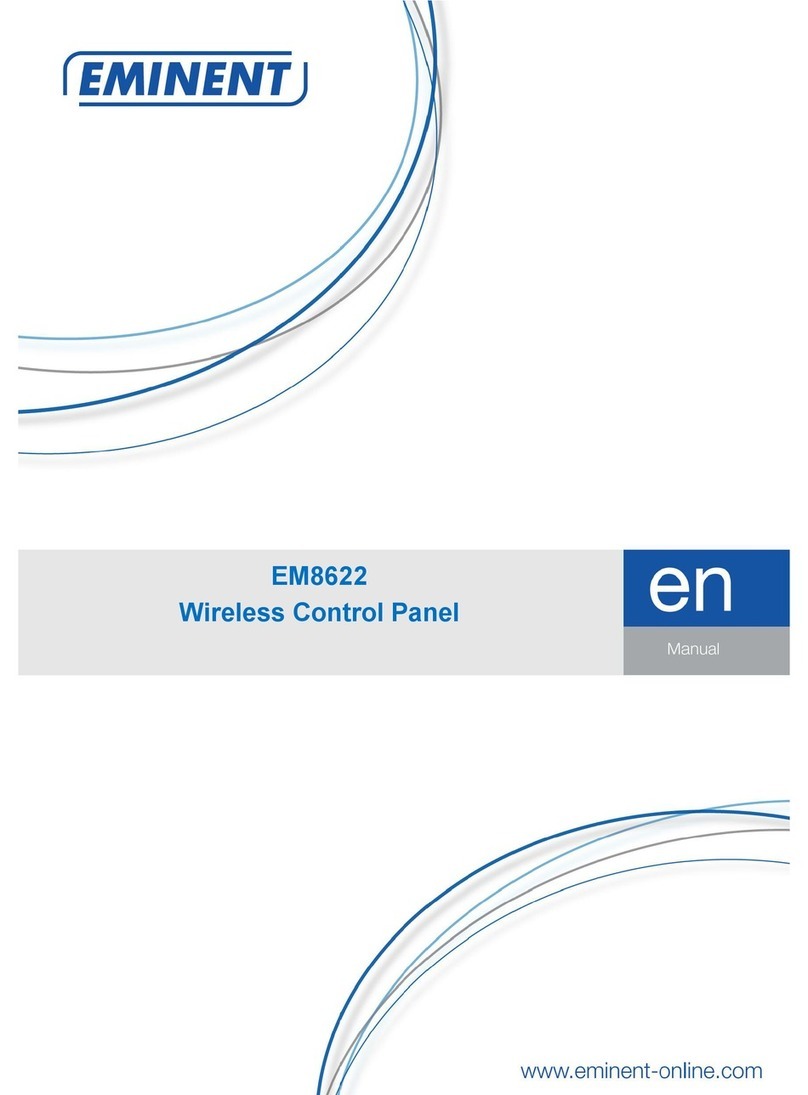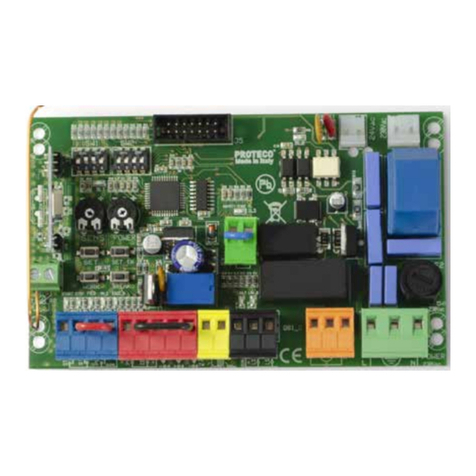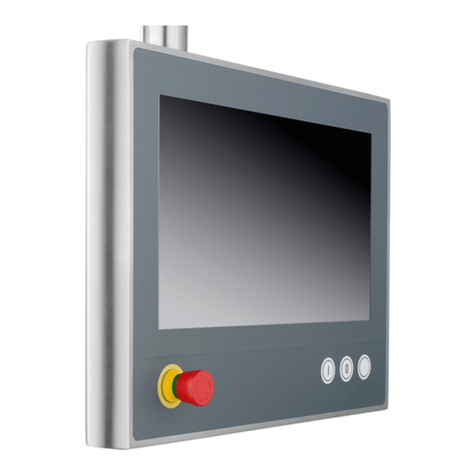Deckma Hamburg NLS 3000 Guide

OPERATING MANUAL
NLS 3000 NAVIGATION
LIGHT CONTROL PANEL
Tel: +49 (0)4105/65 60 – 0
* DECKMA GmbH *
Fax: +49 (0)4105/65 60 – 25
E-mail: [email protected]
*
Internet: www.deckma-gmbh.de
Page 1 of 27
Technical documentation
- NLS 3000 -
NAVIGATION LIGHT CONTROL
For use on seagoing vessels
Change status
Version Date Author Checked Remark
0.1 07.08.2008 STO HN 1. Edition
0.2 29.09.2010 STO TK Changes to BK01-E to
BK08...48-E
0.3 08.04.2016 TK TK Some small errors corrected
0.4 12.01.2017 TK TK „Special function“ handmade (p. 21)

OPERATING MANUAL
NLS 3000 NAVIGATION
LIGHT CONTROL PANEL
Tel: +49 (0)4105/65 60 – 0
* DECKMA GmbH *
Fax: +49 (0)4105/65 60 – 25
E-mail: [email protected]
*
Internet: www.deckma-gmbh.de
Page 2 of 27
Table of contents
1. Application and design 3
2. Modules 4
3.0 Description of the modules
3.1 Main module MM01-E 5-6
3.2 LM08-E 8-channel lantern module 7-9
3.3 LM02-E 2-channel lantern module 10-11
3.4 BK08...48-E conventional control panel 12-14
3.5 Graphic control panel 15-17
3.6 VM01-E VDR module 18
3.7 SM01-E interface module 19
3.8 DT01-E data module 20
4.0 Operation of NLS 3000 via conventional BK08...48-E 21-22
5.0 Operation of NLS 3000 via graphic BG01-E 23-24
6.0 Mechanical specification
6.1 BK01-E conventional control panel 25
6.2 BG01-E graphic control panel 25
6.3 Control cabinet for up to 16 light circuits 26
6.4 Control cabinet for 17-48 light circuits 26
7.0 Installation instruction
7.1 Cable requirements 27
8.0 Drawings 28 and following

OPERATING MANUAL
NLS 3000 NAVIGATION
LIGHT CONTROL PANEL
Tel: +49 (0)4105/65 60 – 0
* DECKMA GmbH *
Fax: +49 (0)4105/65 60 – 25
E-mail: [email protected]
*
Internet: www.deckma-gmbh.de
Page 3 of 27
1. Application and design
The NLS 3000 navigation light control panel serves for switching and monitoring up to 48 lights
onboard ships. These can be switched on or off individually. Two power supplies can provide the
power for the lights (main and backup). Selection between these two supplies can take place either
manually or automatically in the event of failure of the power supply currently in use.
The NLS 3000 navigation light control panel is in a modular design. The light modules (light switching
and monitoring) are installed in a control cabinet together with the main module (power and master
module monitoring). The control panels (conventional with buttons and LEDs or graphic with
touchscreen) can be arranged projecting.
The individual modules are interconnected via a bus cable that supplies the modules with operating
voltage.
The system is organised according to the master-slave principle. This means that a master module
collects the information from the slave modules, evaluates and manages the information and initiates
actions at the slave modules.
For this purpose, the master (main module) must know which lights must be evaluated with which
values and what actions need to be initiated in the event of failure. The system topology must also be
known. This is achieved by the configuration of the main module and is permanently stored in the
internal EEPROM. This configuration is simply written into the main module by text file transfer
(terminal or SD card via data module). The text file containing configuration data and menu texts is
arranged so that it can effectively be generated from Microsoft Excel tables.

OPERATING MANUAL
NLS 3000 NAVIGATION
LIGHT CONTROL PANEL
Tel: +49 (0)4105/65 60 – 0
* DECKMA GmbH *
Fax: +49 (0)4105/65 60 – 25
E-mail: [email protected]
*
Internet: www.deckma-gmbh.de
Page 4 of 27
2. Modules
2.1 NLS 3000 MM01-E Main module
•Supply 230V/115V AC or 24V DC
•Main and backup power switching
•Power for modules and distribution for bus system
•2 relay outputs for signalling
•2 optocoupler inputs for signalling
•Optional control panel with LCD display
•Data module interface (same for FMS 3000 / DT01-E)
2.2 NLS 3000 LM08-E 8-channel lantern module
•8 monitored, switched and protected light/lantern circuits
•Main and backup power switching
2.3 NLS 3000 LM02-E 2-channel lantern module
•2 monitored, switched and protected light/lantern circuits
•Main and backup power switching
2.4 NLS 3000 BK**-E Conventional control panel (mimic)
•Ship mimic with 7 LEDs for main lights/lanterns
•Display and switching option for up to 48 individual lights/lanterns
•4x buttons for special light/lantern functions
•Backlit button labelling field (dimmable)
2.5 NLS 3000 BG01-E Graphic control panel (with touchscreen)
•Graphic control panel with touchscreen (control options as on conventional control panel)
•Jpg background images for light/lantern positions
2.6 NLS 3000 VM01-E VDR module
(identical with FMS 3000)
•Connection to VDR
2.7 NLS 3000 SM01-E Slave module
(identical with FMS 3000)
•Connect to ship automation system
2.8 NLS 3000 DT01-E Data module
(identical with FMS 3000)
•Module for data management and editing on SD card
•Only for connection to specific interface
•Identically used in FMS 3000
•Use for service purposes or configuration updates
2.9 FMS 3000 RS232 terminal adapter
•Interface for connection of the data module interface 8 (on NLS 3000 / MM01-E) with PC (RS232)
•Use for service purposes only (see and respect the separate service manual for this!)

OPERATING MANUAL
NLS 3000 NAVIGATION
LIGHT CONTROL PANEL
Tel: +49 (0)4105/65 60 – 0
* DECKMA GmbH *
Fax: +49 (0)4105/65 60 – 25
E-mail: [email protected]
*
Internet: www.deckma-gmbh.de
Page 5 of 27
3. Description of the modules
3.1 NLS 3000 MM01-E
Main module
3.1.1 General
The main module is the communication master within the NLS 3000 communication system. In
addition to the power for the connected modules, the main module includes a power monitoring
circuit. The main module also has a connection for an optional data module DT01-E.
The main module has 10 WEIDMÜLLER connectors for modules supplying a total power of about 4A.
For conversion of the 230VAC and 115VAC power supplies to the 24V/DC internal system supply
voltage, an option for the connection of two external power supplies is provided.
3.1.2 Overview of control and indicating elements
NLS 3000 MM01-E main module
Not yet available
Width 168 mm
Height 108 mm
Depth 50 mm + connector
around 80mm
Mounting method Top-hat rail DIN EN 50022
Weight 0.5 kg

OPERATING MANUAL
NLS 3000 NAVIGATION
LIGHT CONTROL PANEL
Tel: +49 (0)4105/65 60 – 0
* DECKMA GmbH *
Fax: +49 (0)4105/65 60 – 25
E-mail: [email protected]
*
Internet: www.deckma-gmbh.de
Page 6 of 27
3.1.2 Optional display
For easy system analysis and display of nominal and actual values, a display board can be added.
The display is controlled by a microcontroller via an 8-bit databus and RS, RW and E (clock). The
buttons on the display board are read-in directly via microcontroller ports.
The display board also has a battery-backed real-time clock. This is connected to the microcontroller
via an I
2
C bus.

OPERATING MANUAL
NLS 3000 NAVIGATION
LIGHT CONTROL PANEL
Tel: +49 (0)4105/65 60 – 0
* DECKMA GmbH *
Fax: +49 (0)4105/65 60 – 25
E-mail: [email protected]
*
Internet: www.deckma-gmbh.de
Page 7 of 27
3.2 NLS 3000 LM08-E
8-chanel lantern module
Width 275 mm
Height 100 mm
Depth 50 mm + connector
about 80mm
Mounting method Top-hat rail DIN EN 50022
Weight 0.8 kg
Supply 24V DC from NLS bus
Power consumption 24V max. 0.4 A
3.2.1 General
The "8-circuit lantern module" is a communication slave within the NLS 3000 communication system.
It allows the connection of up to 8 lights/lanterns which can be switched on or off via relays with a
conventional “2-pole” glass fuse protection (5x20mm).
The current in the individual light/lantern circuit is continuously measured. These values are
transferred to the master which evaluates these values from which it derives status information for the
control panels. Should the current fail or reach the required maximum value, an alarm is generated.
3.2.2 Light/lantern circuits
The power supplies (main and backup) are supplied jointly for all 8 lights/lanterns via JN1. For
switching between the two power supplies, one switching relay for two lights respectively is arranged
downstream of this supply circuit. The respective voltage is then distributed between the individual
light circuits.
Each light/lantern circuit has a current sensor for two current ranges. The first switching operation
takes place for currents up to about 200 mA via a shunt, the second, for currents up to about 4 A, a
Hall sensor is used. Both switching operations are sensed by a microcontroller with a 10-bit analogue
circuit and made available for further processing via the FMS bus communication.
Each light/lantern circuit has a two-pole glass fuse protection (5x20mm). Each light/lantern circuit can
be switched by the microcontroller via one relay respectively. For this purpose, the commands from
the master arriving via the FMS bus communication protocol are evaluated.
The light/lantern circuits are each combined in groups of four on the output connectors JL1 and JL2
from where separate wiring to the respective lights takes place.
Each light/lantern circuit can be switched on or off via a simple mechanical “double pole” switch
independent of the microcontroller. This is also possible in the event of failed or disconnected
electronic circuits, thus enabling an emergency light backup or “fallback” operation.

OPERATING MANUAL
NLS 3000 NAVIGATION
LIGHT CONTROL PANEL
Tel: +49 (0)4105/65 60 – 0
* DECKMA GmbH *
Fax: +49 (0)4105/65 60 – 25
E-mail: [email protected]
*
Internet: www.deckma-gmbh.de
Page 8 of 27
3.2.3 LEDs and DIP switch functions (microcontroller board)
"EXT" ⇒External communication:
(2 LEDs)
•Communication status with master via NLS bus system
•Green flashing ⇒Communication without faults
•Red short ⇒Individual communication faults
•Red ⇒Communication in constant fault state
"INT" ⇒Internal communication:
(2 LEDs)
•Communication status with module-internal A/D converter
•Green flashing ⇒Communication without faults
•Red short ⇒Individual communication faults
•Red ⇒Communication in constant fault state
"OK" ⇒Light status:
(8 green LEDs)
•Light circuit status without faults
•Green ⇒Light is switched on and values are correct
•Green flashing ⇒Delay after switching on continues until valid A/D values
are present or "overwrite" is active (DIP switch)
"FAULT" ⇒Light status:
(8 red LEDs)
•Light circuit status with faults
•Red flashing ⇒Light fault detected, new fault
•Red ⇒Light fault detected, fault accepted
"OFF" ⇒Fault "overwrite":
(yellow LED, 8-circuit DIP switch)
•Faults in light circuits are not signalled
•LED off ⇒No "overwrite" active on this module
•Yellow LED flashing ⇒Minimum one "overwrite" active on this module
•DIP switch "ON" ⇒Fault in light circuit is not signalled
"ADR" ⇒NLS address:
(4-circuit DIP switch)
•Address in NLS system
•Address must correspond with configuration data
•Each address may only be set 1x within the entire system

OPERATING MANUAL
NLS 3000 NAVIGATION
LIGHT CONTROL PANEL
Tel: +49 (0)4105/65 60 – 0
* DECKMA GmbH *
Fax: +49 (0)4105/65 60 – 25
E-mail: [email protected]
*
Internet: www.deckma-gmbh.de
Page 9 of 27
How to readout and reset the operating hours counter (used for an 8
channel module)
HOUR-LED (amber): Operating hours display active
OK-LED (green): Display of the chosen channel
FAULT-LED (rot): Display the operating hours
1: Push the button “LED HOUR”. This will activate the operating hours
display. After 30 seconds “with no action” this indication will be
deactivated automatically.
2. Select single channel through DIP-switches “OFF”. Is no DIP-switch
selected, the channel will be shown one after another (in chain).
Clearing (resetting) one LED-channel is only possible, when the
dedicated DIP-switch is set (set to active)!
3. The selected channel is shown through the “OK-LED”.
4. At the same time the lowest byte value from the operating hours
counter will be shown through the “FAULT-LED”. This indication is here
binary coded!
5. Push the button “LED HOUR” a second time, the LEDs will show the
middle byte from the operating hours counter.
6. Push the button “LED HOUR” a third time, the LEDs will show the
“highest” (high-byte) from the operating hours counter.
7. Is for the fourth time the button pushed AND the button is held down for
around 5 seconds AND is the matched DIP-switch selected, the
operating hours counter will be cleared. As feedback to this action all
red and green LEDs lights up for a short time...
LED HOUR
LED HOUR
HOUR-LED lights up
LED HOUR
LED HOUR
OK-LED lights up (channel number)
8 FAULT-LEDs (counter “low”-byte)
8 FAULT-LEDs (counter „middle“-byte)
8 FAULT-LEDs (counter “high”-byte)
l
ong
short
Operating hours counter cleared (channel 1)
on
OK-LED (the next channel number)
8 FAULT-LEDs (counter “low”-byte)

OPERATING MANUAL
NLS 3000 NAVIGATION
LIGHT CONTROL PANEL
Tel: +49 (0)4105/65 60 – 0
* DECKMA GmbH *
Fax: +49 (0)4105/65 60 – 25
E-mail: [email protected]
*
Internet: www.deckma-gmbh.de
Page 10 of 27
3.3 NLS 3000 LM02-E
2-channel lantern module
Width 124mm
Height 108 mm
Depth 50 mm + connector
around 80mm
Mounting method Top-hat rail DIN EN 50022
Weight 0.8 kg
Supply 24V DC from NLS bus
Power consumption 24V max. 0.4 A
3.3.1 General
The "2-channel lantern module" is a communication slave within the NLS communication system.
It allows the connection of up to two lights which can be switched on or off via relays with two-pole
fuse protection.
The current in the individual light circuits is continuously measured. These values are transferred to
the master which evaluates these values from which it derives status information for the control
panels. Should the current fail to reach the required value, an alarm is generated.
3.3.2 Light circuits
The power supplies (main and backup) are supplied jointly for all two lights via JN1. For switching
between the two power supplies, one switching relay for two lights respectively is arranged
downstream of this supply circuit. The respective voltage is then distributed between the individual
light circuits.
Each light circuit has a current sensor for two current ranges. The first switching operation takes place
for currents up to about 200 mA via a shunt, the second for currents up to about 4 A via a Hall sensor.
Both switching operations are sensed by a microcontroller with 10-bit analogue circuit and made
available for further processing via the FMS bus.
Each light circuit has two-pole fuse protection. Each light circuit can be switched on by the
microcontroller via one relay respectively. For this purpose, the commands from the master arriving
via the FMS bus are evaluated
The light circuits are each combined on the output connector JL1 from where separate wiring to the
respective lights takes place.
Each light circuit can be switched via a toggle switch independent of the microcontroller. This is also
possible in the event of failed or disconnected electronic circuits, thus enabling emergency light
operation.

OPERATING MANUAL
NLS 3000 NAVIGATION
LIGHT CONTROL PANEL
Tel: +49 (0)4105/65 60 – 0
* DECKMA GmbH *
Fax: +49 (0)4105/65 60 – 25
E-mail: [email protected]
*
Internet: www.deckma-gmbh.de
Page 11 of 27
3.3.3 LEDs and DIP switch functions (microcontroller board)
"EXT" ⇒External communication:
(2 LEDs)
•Communication status with master via NLS bus system
•Green flashing ⇒Communication without faults
•Red short ⇒Individual communication faults
•Red ⇒Communication in constant fault state
"INT" ⇒Internal communication:
(2 LEDs)
•Communication status with module-internal A/D converter
•Green flashing ⇒Communication without faults
•Red short ⇒Individual communication faults
•Rot ⇒Communication in constant fault state
"OK" ⇒Light status:
(2 green LEDs)
•Light circuit status without faults
•Green ⇒Light is switched on and values are correct
•Green flashing ⇒Delay after switching on continues until valid A/D values
are present or "overwrite" is active (DIP switch)
"FAULT" ⇒Light status:
(2 red LEDs)
•Light circuit status with faults
•Red flashing ⇒Light fault detected, new fault
•Red ⇒Light fault detected, fault accepted
"OFF" ⇒Fault "overwrite":
(yellow LED, 8-circuit DIP switch – switch 7/8)
•Faults in light circuits are not signalled
•LED off ⇒No "overwrite" active on this module
•Yellow LED flashing ⇒Minimum one "overwrite" active on this module
•DIP switch "ON" ⇒Fault in light circuit is not signalled
"ADR" ⇒NLS address:
(8-circuit DIP switch – switch 1-5)
•Address in NLS system
•Address must correspond with configuration data
•Each address may only be set 1x within the entire system

OPERATING MANUAL
NLS 3000 NAVIGATION
LIGHT CONTROL PANEL
Tel: +49 (0)4105/65 60 – 0
* DECKMA GmbH *
Fax: +49 (0)4105/65 60 – 25
E-mail: [email protected]
*
Internet: www.deckma-gmbh.de
Page 12 of 27
3.4 NLS 3000 BK08...48-E Conventional control panel (mimic)
Width 111.5 mm
144 mm
176.5 mm
209 mm
241,5 mm
274 mm
BK 08-E
BK 16-E
BK 24-E
BK 32-E
BK 40-E
BK 48-E
Height 144 mm
Depth 60 mm + connector
About 130 mm
Mounting method Front panel mounting
Weight 0,6 kg BK 16-E
3.4.1 General
The "conventional control panel" is a communication slave within the NLS 3000 communication
system. It serves for display and control of the NLS, enabling lights to be switched on or off. From this
control panel, the NLS generates visual and audible alarms on faults in the light circuits or in the NLS
and system power supply.
3.4.2 Buttons
Each individual button consists of a button, a status LED arranged above and a labelling field located
on the left. The labelling field (dimmable) is backlit. Marking of the labelling fields takes place via an
insertable strip that can be adapted for various projects.
3.4.3 General buttons
For general control of the NLS 3000, permanent and configurable functions are implemented. The
associated buttons are arranged in the left section of the control panel or directly below of the ship’s
mimic indication.

OPERATING MANUAL
NLS 3000 NAVIGATION
LIGHT CONTROL PANEL
Tel: +49 (0)4105/65 60 – 0
* DECKMA GmbH *
Fax: +49 (0)4105/65 60 – 25
E-mail: [email protected]
*
Internet: www.deckma-gmbh.de
Page 13 of 27
3.4.5 Power and system:
Labelling field
•Marking with button function: …here: "Power"
Power status button
•Switches the power for the lights
•Pressing this button switches on the power via "MAIN"
•With the power switched on, switching takes place between "MAIN" and "EMGY"
•Pressing and holding this button switches off the power after around 3 seconds
Power status LED
•Off ⇒Power off
•Green ⇒Power on
•Red flashing ⇒No power ("MAIN" or "EMGY"), new fault
•Red ⇒No power ("MAIN" or "EMGY"), fault accepted
System status LED
•Green ⇒System without faults
•Red flashing ⇒System fault (e.g. module not accessible)
Main LED and emergency LED
a. to "Power off" status
•Green ⇒Power available
•Green flashing ⇒No power
b. to "Power on" status
•Green ⇒Lights currently supplied via this power supply
•Off ⇒Lights not currently supplied via this power supply
•Green flashing ⇒No power
System status LED
Power status LED
Power status button
Emergency LED
Main LED
Labelling field

OPERATING MANUAL
NLS 3000 NAVIGATION
LIGHT CONTROL PANEL
Tel: +49 (0)4105/65 60 – 0
* DECKMA GmbH *
Fax: +49 (0)4105/65 60 – 25
E-mail: [email protected]
*
Internet: www.deckma-gmbh.de
Page 14 of 27
3.4.6 Function and light buttons:
Labelling field
•Marking with associated button function
Status button
•Switches associated function or light on or off
Status LED
•Off ⇒Function or light switched off
•Green ⇒Function or light switched on
•Green flashing ⇒Delay after switching on continues until valid A/D values
are present or "overwrite" is active (DIP switch)
•Red flashing ⇒Light fault detected, new fault
•Red ⇒Light fault detected, fault accepted
Mimic:
Mimic LEDs
•Off ⇒Light switched off
•On ⇒Light switched on
•Flashing ⇒Light fault detected
Status LED
Status button
Labelling field

OPERATING MANUAL
NLS 3000 NAVIGATION
LIGHT CONTROL PANEL
Tel: +49 (0)4105/65 60 – 0
* DECKMA GmbH *
Fax: +49 (0)4105/65 60 – 25
E-mail: [email protected]
*
Internet: www.deckma-gmbh.de
Page 15 of 27
3.5 NLS 3000 BG01-E
Graphic control panel
(with touchscreen)
Width 120 mm
Height 95 mm
Depth 60 mm +connector
around 130 mm
Mounting method Front panel mounting
Weight 0.4 kg
Connection NLS Bus In 15-pin Dsub male JP1
Connection NLS Bus Out 15-pin DSub female JPT1
Supply 24V DC from NLS bus
Power consumption 24V max. 0.3 A
Display visible area 95.4 mm x 53.9 mm
Display resolution 480 x 272 pixels
Display colours 16 it (65,536)
3.5.1 General
The "graphic control panel" is a communication slave within the NLS 3000 communication system.
It serves for display and control of the NLS, enabling lights to be switched on or off. From this control
panel, the NLS generates visual and audible alarms on faults in the light circuits or in the NLS and
system power supply.

OPERATING MANUAL
NLS 3000 NAVIGATION
LIGHT CONTROL PANEL
Tel: +49 (0)4105/65 60 – 0
* DECKMA GmbH *
Fax: +49 (0)4105/65 60 – 25
E-mail: [email protected]
*
Internet: www.deckma-gmbh.de
Page 16 of 27
3.5.2 Power and system:
Labelling field
•Marking with button function: …here: "Power"
Power status button
•Switches the power for the lights
•Pressing this button switches on the power via "MAIN"
•With the power switched on, switching takes place between "MAIN" and "EMGY"
•Pressing and holding this button switches off the power after about 3 seconds
Power status LED
•Off ⇒Power off
•Green ⇒Power on
•Red flashing ⇒No power ("MAIN" or "EMGY"), new fault
•Red ⇒No power ("MAIN" or "EMGY"), fault accepted
System status LED
•Green ⇒System without fault
•Red flashing ⇒System fault (e.g. module not accessible)
Main LED and Emergency LED
a. to "Power off" status
•Green ⇒Power available
•Green flashing ⇒No power
b. to "Power on" status
•Green ⇒Lights currently supplied via this power supply
•Off ⇒Lights not currently supplied via this power supply
•Green flashing ⇒No power
System status LED
Power status LED
Power status button
Emergency LED
Main LED

OPERATING MANUAL
NLS 3000 NAVIGATION
LIGHT CONTROL PANEL
Tel: +49 (0)4105/65 60 – 0
* DECKMA GmbH *
Fax: +49 (0)4105/65 60 – 25
E-mail: [email protected]
*
Internet: www.deckma-gmbh.de
Page 17 of 27
3.5.3 Function and light button:
Labelling field
•Marking with associated button function
Button status
•Switches associated function or light on or off
Status LED
•Off ⇒Function or light switched off
•Green ⇒Function or light switched on
•Green flashing ⇒Delay after switching on continues until valid A/D values
are present or "overwrite" is active (DIP switch)
•Red flashing ⇒Light fault detected, new fault
•Red ⇒Light fault detected, fault accepted
Mimic:
Mimic LEDs
•Off ⇒Light off
•On ⇒Light on
•Flashing ⇒Light fault detected
Status LED Status button
Labelling field

OPERATING MANUAL
NLS 3000 NAVIGATION
LIGHT CONTROL PANEL
Tel: +49 (0)4105/65 60 – 0
* DECKMA GmbH *
Fax: +49 (0)4105/65 60 – 25
E-mail: [email protected]
*
Internet: www.deckma-gmbh.de
Page 18 of 27
3.6 NLS 3000 VM01-E
VDR module
Width 72 mm
Height 104 mm
Depth 88 mm
Mounting method Top-hat rail DIN EN 50022
Weight 0.3 kg
3.6.1 General
The VDR module sends data via RS485 or RS232 to a VDR (Voyage Data Recorder). The module
can alternatively be provided with drivers for RS485 or RS232.
The communication profile of the VDR interface is roughly referenced to the following specifications:
IEC 61162-1 Part 1 Single talker and multiple listeners
IEC 61162-100 Extra requirements for the UAIS
IEC 61162-102 Extra requirements for the Voyage Data Recorder
3.6.2 VDR interface
The microcontroller, an ATmega162 with two serial interfaces, communicates with the master via one
of the interfaces and with the other interface via the alternative driver provided for RS485 or RS232.
3.6.3 RS485 communication
Communication takes place via an RS485 driver module. The microcontroller takes over direct
communication with the RS485 bus and filters the messages for the VDR module. The two status
LEDs on the module indicate the status of the RS485 interface:
Green LED: Module status scanned by master
Red LED: Communication problem or timeout

OPERATING MANUAL
NLS 3000 NAVIGATION
LIGHT CONTROL PANEL
Tel: +49 (0)4105/65 60 – 0
* DECKMA GmbH *
Fax: +49 (0)4105/65 60 – 25
E-mail: [email protected]
*
Internet: www.deckma-gmbh.de
Page 19 of 27
3.7 NLS 3000 SM01-E
Interface module
Width 54 mm
Height 60 mm
Depth 17 mm
Mounting method Plug-in
Weight 0.05 kg
Data and power connection 25-pin DSub male
Supply 5V DC
Power consumption from 5V supply max. 0.005 A Supplied from module
3.7.1 General
The slave module serves for connection of the NLS 3000 main module to the ship automation system.
It decouples both systems.
3.7.2 Connector
Communication takes place via an RS232 driver module with the main module and via an RS485
module with the ship automation system. The interface output to the ship automation system is
isolated via a digital isolator.
The terminating resistor for the RS485 bus can be connected via a slide switch.

OPERATING MANUAL
NLS 3000 NAVIGATION
LIGHT CONTROL PANEL
Tel: +49 (0)4105/65 60 – 0
* DECKMA GmbH *
Fax: +49 (0)4105/65 60 – 25
E-mail: [email protected]
*
Internet: www.deckma-gmbh.de
Page 20 of 27
3.8 FMS 3000 DT01-E
Data module
Width 54 mm
Height 60 mm
Depth 17 mm
Mounting method Plug-in
Weight 0.05 kg
Data and power connection 25-pin DSub male
Supply 5V DC
Power consumption max. 0.15 A
SD card 64MB...1GB 256MB Kingston
recommended
3.8.1 General
The data module serves for the storage of configuration data and data occurring in the operation of
AFMS3000 on an SD memory card. For this purpose, the module contains its own microcontroller,
which makes reading and writing of the SD memory card independent of the higher-level system.
Integration into the system takes place via a special interface.
3.8.2 Power supply
The module receives its 5V power for supplying the microcontroller via the interface. From this
voltage, 3.3V is generated internally for supplying the SD memory card.
3.8.3 Connector
Communication takes place via an RS232 driver module. The data module is also supplied with 5V
operating voltage via the connector.
3.8.4 LEDs
Three status LEDs are provided on the back of the module:
Green LED: Module ok, access to SD card file system possible
Yellow LED: File open for reading or writing
Red LED: Read or write operation, fault on steady light indication
3.8.5 SD memory card slot
A slot is provided at the rear of the module for receiving an SD memory card. This locks in place after
it is pushed into the slot. The memory card can be removed by exerting light pressure on the same.
Table of contents
Popular Control Panel manuals by other brands
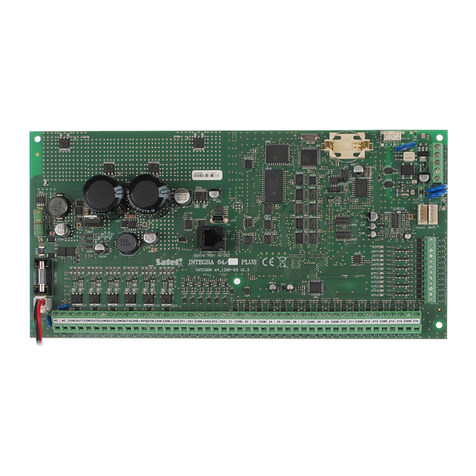
Satel
Satel Integra Plus Series Installer manual
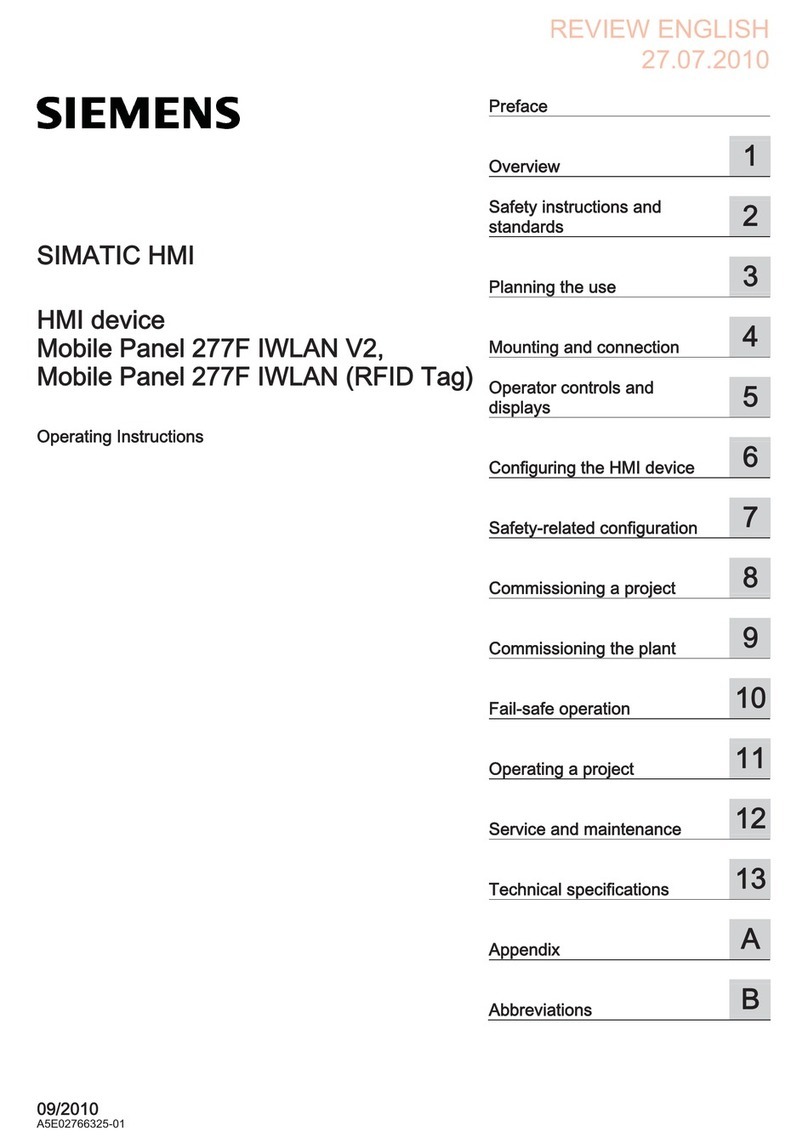
Siemens
Siemens SIMATIC Mobile Panel 277F IWLAN V2 operating instructions

Honeywell
Honeywell ControLinks YP7999A1000 installation instructions
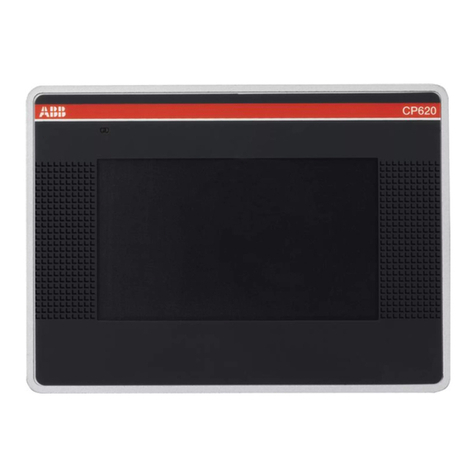
ABB
ABB CP 600 Series operating instructions
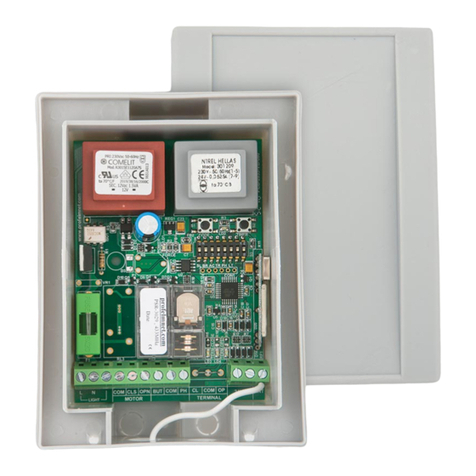
Profelmnet
Profelmnet 3029 manual
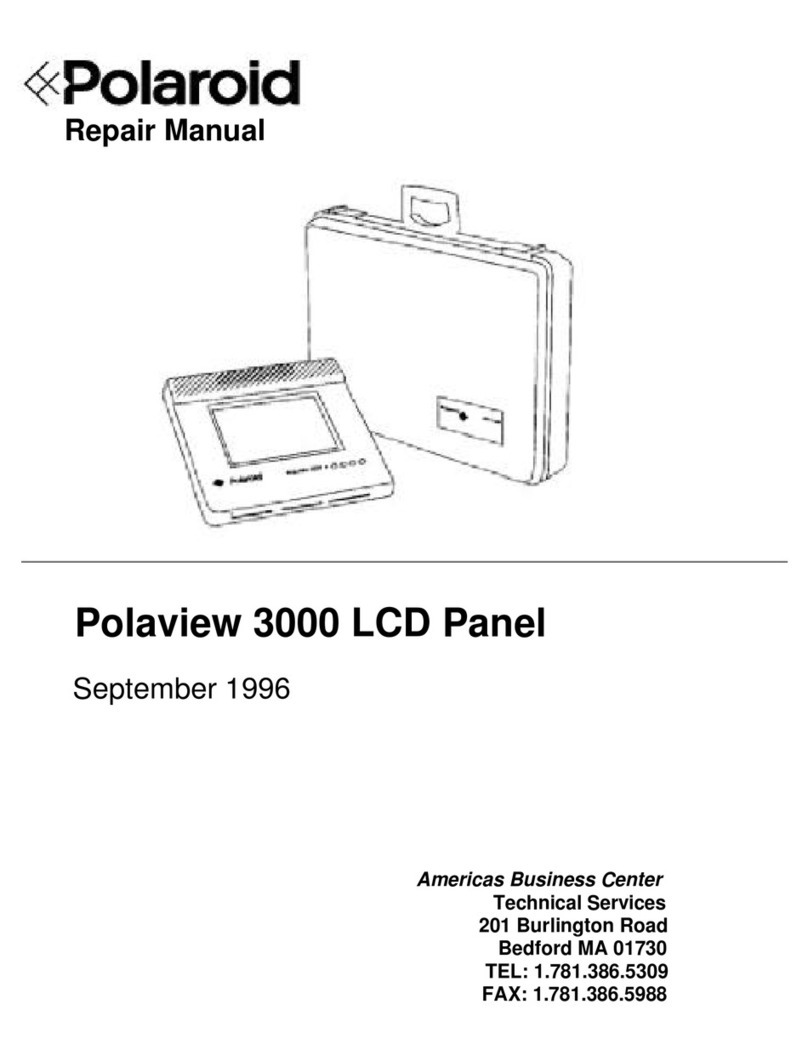
Polaroid
Polaroid Polaview 3000 Repair manual
